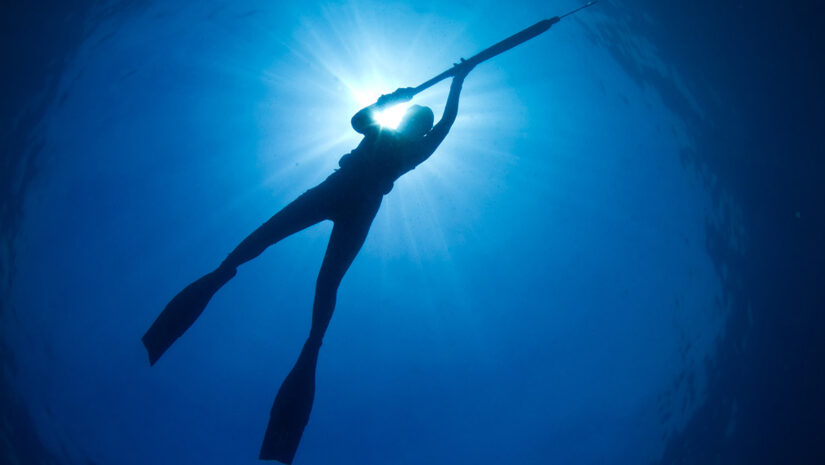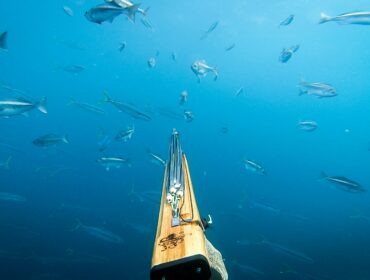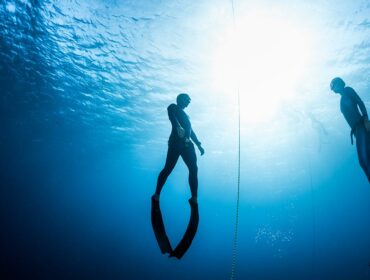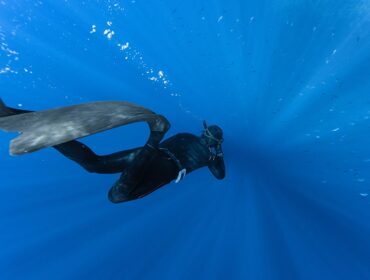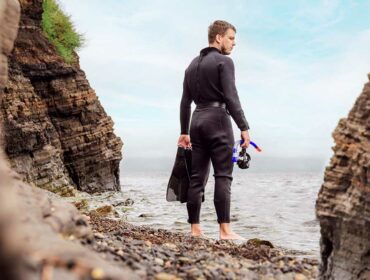Spearfishing is an exhilarating underwater activity that allows you to hunt fish using a spear gun. Whether you are a beginner or an experienced spearo, our ultimate guide to spearfishing will give you tips, tricks, and insights that will take your underwater hunting to the next level.
What is Spearfishing?
Spearfishing is a form of fishing that involves hunting fish underwater using a specially designed spear gun. It dates back to ancient times, when early civilizations used sharpened sticks or tridents to catch fish for survival.
When engaging in spearfishing, divers must rely on their skills, knowledge of the marine environment, and understanding of fish behavior to successfully catch their target. It requires patience, precision, and a deep appreciation for the underwater world.
The History of Spearfishing
The history of spearfishing can be traced back thousands of years. Ancient cultures, such as the Greeks and the Polynesians, relied on spearfishing as a primary means of gathering food.
Over time, spearfishing techniques and equipment have evolved, becoming more sophisticated and efficient. Early spearfishers used simple wooden spears, often with barbs or multiple prongs to increase their chances of a successful catch. As civilizations advanced, so did their fishing methods.
Today, spearfishing has become a popular recreational activity enjoyed by many divers around the world. It combines the thrill of the hunt with a deep connection to nature, providing an unforgettable experience for those who venture into the underwater realm.
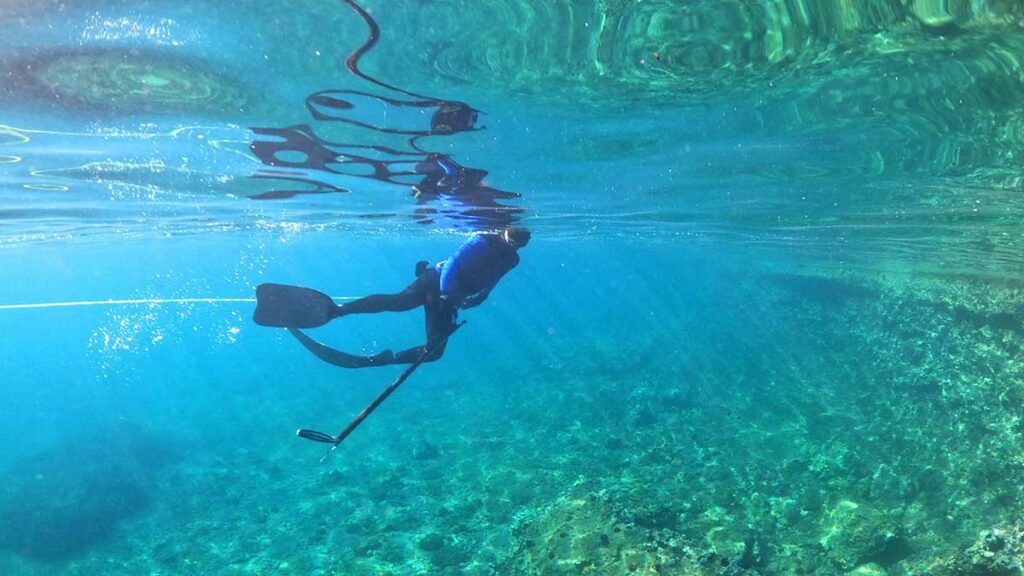
Why Choose Spearfishing?
Spearfishing offers a unique experience that combines the thrill of hunting with the beauty of the underwater world. Unlike traditional fishing methods, spearfishing allows you to actively seek out and target specific fish species, resulting in a more rewarding catch.
When you engage in spearfishing, you become part of the marine ecosystem, observing the intricate interactions between different species and their habitats. It offers a chance to witness the vibrant colors of coral reefs, the graceful movements of marine creatures, and the tranquillity of the underwater environment.
Additionally, spearfishing promotes sustainable fishing practices, as you can select only the fish you intend to consume. This helps to maintain healthy fish populations and preserve the delicate balance of marine ecosystems. By being selective in your catch, you contribute to the conservation of marine life and ensure future generations can also enjoy the wonders of the underwater world.
Essential Gear for Spearfishing
Following are the essential spearfishing equipment for beginners.
Spear Guns
One of the key aspects of spearfishing is the use of a spear gun. Spearguns are equipped with trigger mechanisms and can shoot a spear with more force and accuracy. They come in various sizes, suitable for different types of fish and depths
There are two main types of spear guns: pneumatic and band-powered. The choice depends on your experience level, hunting style, and target species.
- Pneumatic spearguns, use compressed air to propel the spear. They’re known for their powerful punch and precision, especially in murkier waters or challenging depths.
- Band-powered spearguns utilize stretchy rubber bands to propel the spear, providing a balance between accuracy and ease of use. They’re user-friendly, making them an excellent pick for both rookies and seasoned spearos.
Another factor to consider is the length of the spear gun. Longer guns offer increased range and power, making them suitable for larger fish and deeper dives. However, they can be more challenging to maneuver in tight spaces. Shorter guns, on the other hand, are more maneuverable but may have limited range and power.
See below for some of our top Spear Guns from brands including Cressi, Mares, Salvimar and Seac.
Pole Spears and Hawaiian Slings
Hawaiian slings and pole spears are hand-powered, without the mechanical intricacies of spearguns.
Pole spears are all about connecting with the sport’s ancient roots. It consists of a long shaft, usually made of fiberglass or metal, with a rubber loop at one end and a sharp point at the other. The diver stretches the rubber loop, aiming the spear, and releases it to shoot at the fish. Ideal for shallow waters and for those smaller, swift fish.
See below for some of our top Pole Spears from brands including AB-Biller, Cressi and JBL.
Hawaiian Slings: The Hawaiian sling is a hybrid between a pole spear and a speargun. It’s essentially a spear shaft that is shot by using a separate slingshot-like device. It combines the simplicity of the pole spear with some of the force associated with spearguns making them great for medium-sized catches.
Ultimately, the choice of spear gun should be based on your individual preferences and the specific conditions you’ll be diving in. It’s always a good idea to try out different types and models before making a purchase to ensure the gun feels comfortable and suits your needs.
See below for some of our top Hawaiian Slings from AB-Biller.
Spearfishing Diving Suit
To ensure your safety and comfort underwater, investing in a high-quality diving suit is essential.
Wetsuits, made of neoprene, are the most common choice for spearfishing. They provide insulation by trapping a thin layer of water between the suit and the skin, which is then warmed by body heat. You can wear any wetsuit however experienced spearo’s wear wetsuits made up of open cell neoprene and have a camouflage print to help break up their silhouette allowing them to be hidden from the fish.
In addition to a spear gun and diving suit, there are other essential gear items every spearfisherman should have. These include a dive mask, snorkel, weight belt, fins, knife, and dive bag. Each piece serves a specific purpose and contributes to a successful spearfishing expedition.
A dive mask is crucial for clear vision underwater, allowing you to spot fish and navigate effectively. Choose a dive mask for spearfishing which has a comfortable fit, a wide field of view, with a good seal that won’t leak as you descend in the water. Low volume masks are becoming very popular to dive with.
A snorkel is used for breathing while floating on the surface, conserving energy and allowing you to observe the underwater environment. Opt for a snorkel with a comfortable mouthpiece. Typically a “J” snorkel is the preferred type of snorkel by spearo’s.
A weight belt is necessary to counteract the buoyancy of the diving suit and equipment, allowing you to descend and maintain a desired depth. It’s important to choose the right amount of weight to achieve neutral buoyancy, ensuring you can dive comfortably without sinking or floating uncontrollably. The weight belt also allows you to secure your knife.
Fins are essential for efficient propulsion through the water. Spearfishing fins are typically longer and narrower than scuba fins and have a foot pocket. They come in different materials like plastic, fiberglass or carbon fiber. You want the fit to be snug and secure so your foot is not rolling around.
A knife is a must have valuable tool for spearfishers, with the primary purpose to dispatch a caught fish humanely, providing a means to cut through fishing lines, or free yourself from entanglements. Ideally look for a sharp dagger shaped knife with a secure sheath, corrosion-resistant blade.
Finally, a dive bag is useful for carrying and organizing your spearfishing gear. Look for a bag with compartments or pockets to keep your equipment secure and easily accessible.
By ensuring you have all the necessary gear, you’ll be well-prepared for a successful and enjoyable spearfishing adventure.
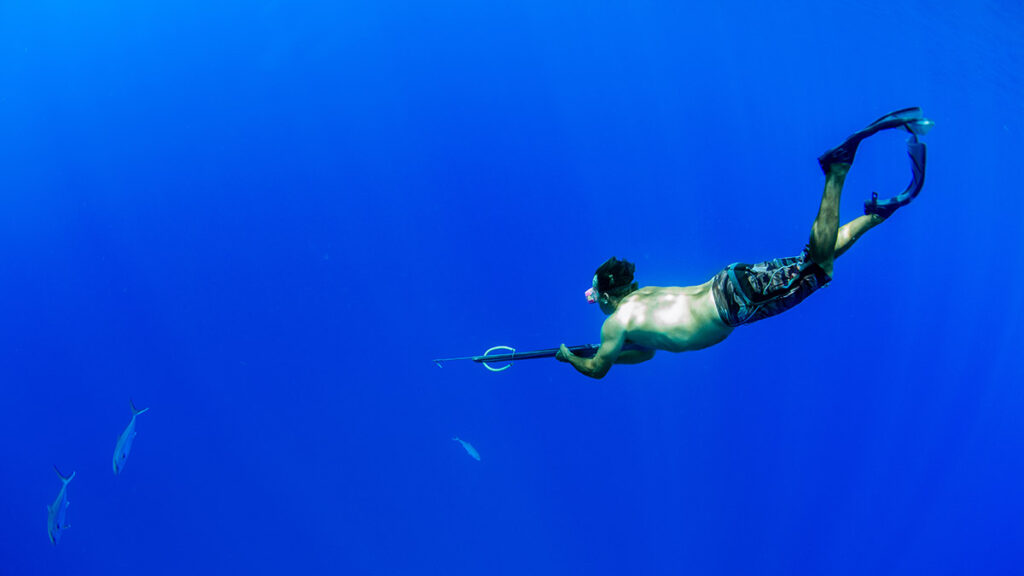
Techniques of Spearfishing
Spearfishing is not just a single technique; there are various types, each with its own allure and challenges. Let’s break down the main ones:
- Freediving Spearfishing: This is perhaps the most traditional form of spearfishing. Freediving involves diving without the aid of external breathing apparatus. Armed with just a spear and lungs full of air, the diver hunts fish while holding their breath, making the hunt both challenging and immensely rewarding. The strong connection between the hunter and the underwater realm is unparalleled in this form.
- Scuba Spearfishing: For those who seek extended time underwater to hunt larger prey or explore deeper depths, scuba spearfishing is the answer. Equipped with a scuba tank and other diving equipment, divers can spend prolonged periods underwater, increasing chances of a successful catch. However, this method is more controversial due to concerns about overfishing and is prohibited in some regions.
- Blue Water Hunting: Venturing into the open ocean or blue water is not for the faint-hearted. This technique targets pelagic species like tuna, mahi-mahi, or wahoo. Due to the depth and currents, blue water hunting often requires specialized gear, boats, and a team approach.
- Shore Spearfishing: No boat? No problem! Shore spearfishing lets you wade into the action right from the beach or rocks. It’s accessible, making it a favorite for many beginners. The excitement here is exploring reefs, rocky areas, or lagoons, where many delicious species tend to dwell.
Mastering the Art of Spearfishing
Spearfishing is an exhilarating sport that combines the thrill of hunting with the beauty of underwater exploration. Whether you’re a seasoned spearo or a beginner looking to embark on your first adventure, there are several key factors to consider in order to make the most of your experience.
Physical Fitness and Training
Being physically fit is crucial for spearfishing. Regular exercise, particularly cardiovascular workouts and strength training, will increase your stamina, endurance, and breath-holding capabilities. Additionally, practicing yoga or Pilates can help improve your flexibility, allowing you to move more freely underwater.
It is also important to focus on specific exercises that target the muscles used in spearfishing, such as the shoulders, back, and legs. This will help you maintain proper form and prevent injuries while diving and manoeuvring in the water.
Learning to Freedive
Freediving is an essential skill for any spearfisherman. It involves descending into the depths of the ocean on a single breath. By practicing proper breathing techniques and developing breath-holding abilities, you can extend your diving time and increase your chances of success in spearfishing.
Spotting and Stalking Your Prey
Spotting and stalking fish is a critical skill that requires patience, observation, and understanding of fish behavior. Learning how to identify signs of fish presence, such as changes in water movement or color, is essential. Using stealthy movements is another crucial aspect of successful spearfishing. Fish are highly sensitive to disturbances in the water, so it is important to move slowly and quietly.
Perfecting Your Aim
Aiming accurately is essential in spearfishing. The ability to hit your target with precision requires practice and a deep understanding of your equipment. Practicing your shooting technique in the water (never shoot a speargun or load a speargun out of water) will help improve your aim and increase your chances of hitting your target.
Spearfishing Safety Precautions and Guidelines
Prior to embarking on a spearfishing adventure, it is crucial to familiarize yourself with safety measures and take necessary precautions. This includes checking weather conditions, having a dive buddy, utilizing dive flags, and staying hydrated. Following these safety guidelines will help ensure a safe and enjoyable experience.
Checking the weather forecast before heading out is essential, as strong currents, rough seas, or inclement weather can pose serious risks to spearfishermen. It is also important to have a dive buddy with you at all times, as they can provide assistance in case of emergencies and help ensure that you do not dive alone.
Using dive flags is another important safety measure. These flags signal to other boaters that there are divers in the area, reducing the risk of accidents. Additionally, staying hydrated before, during, and after your dive is crucial to prevent dehydration and maintain optimal physical performance.
Remember, spearfishing can be an intense and physically demanding activity, so it is important to listen to your body and take breaks when needed. By prioritizing safety and following these precautions, you can enjoy a memorable and successful spearfishing adventure.
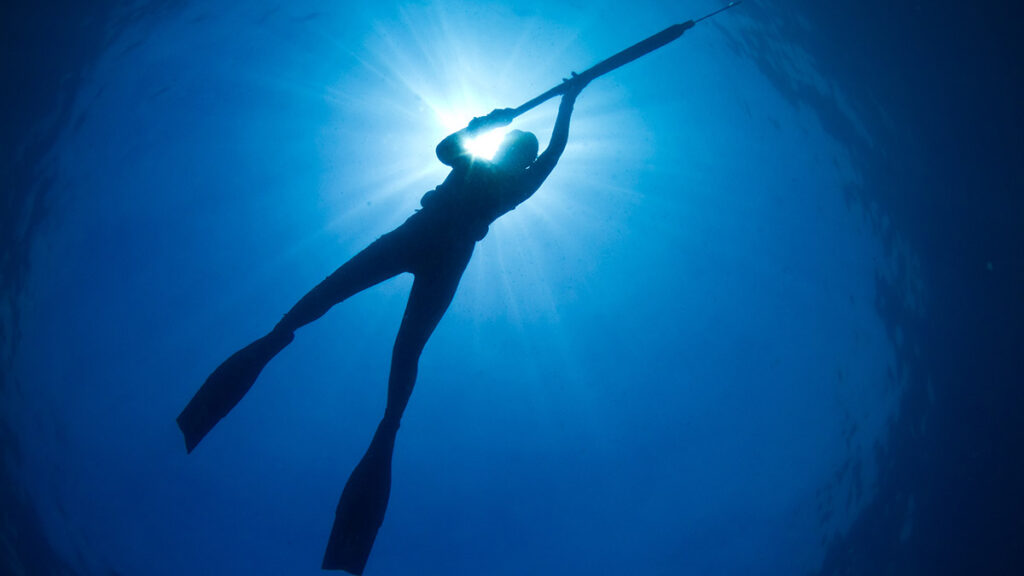
Top Spearfishing Locations Worldwide
Mediterranean, Europe
A haven for spearfishers, the Mediterranean Sea, with its clear blue waters, offers a unique blend of old-world charm and rich marine life. From Spain’s Costa Brava to the islands of Greece, divers can hunt for groupers, sea bass, and amberjacks amidst ancient underwater ruins and vibrant seascapes.
Great Barrier Reef, Australia
As the world’s largest coral reef system, the Great Barrier Reef is a spearfishing paradise. Spanning over 1425 miles, it is home to an astounding variety of fish, including the treasured coral trout, Spanish mackerel, and giant trevally. The reef’s vastness means spearfishers can find both shallow lagoons for beginners and deeper waters for experienced hunters.
Baja California, Mexico
Bordered by the Pacific Ocean and the Sea of Cortez, Baja California is a prime spot for pelagic spearfishing. The nutrient-rich waters attract yellowtail, wahoo, and even the elusive blue water species like marlin and sailfish.
Azores, Portugal
Located in the middle of the Atlantic Ocean, the Azores archipelago is a hotspot for blue water spearfishing. The deep-sea mounts and temperate waters attract large pelagic fish like tuna, wahoo, and dorado. The volcanic underwater topography also offers a unique backdrop for spearfishing excursions.
Bali, Indonesia
With its warm tropical waters, Bali is a spearfishing destination like no other. The Indonesian Throughflow brings with it a rich variety of species, including dogtooth tuna, Maori sea perch, and midnight snappers. Bali’s diverse marine environments, from coral reefs to deep blue waters, offer challenges and delights for spearfishers of all levels.
Top Spearfishing Locations in the US
Florida Keys, Florida
A top destination for its clear waters and a diverse array of marine life. The Florida Keys offer opportunities to hunt species like grouper, snapper, hogfish, and the challenging amberjack.
Channel Islands
Situated off the coast of Southern California, the Channel Islands are a premier destination for spearfishing. Rich in marine life, divers can encounter white seabass, yellowtail, calico bass, and even the prized halibut amidst dense kelp forests and rocky outcrops.
La Jolla
Located in San Diego, La Jolla is famed for its underwater park and ecological reserve. Spearfishers can explore its kelp forests, canyons, and sandy flats. Home to a variety of species such as the sheephead, yellowtail, and even the occasional bluefin tuna, it’s a favorite spot for many California spearos.
Big Island, Hawaii
Hawaii’s waters are synonymous with spearfishing. The Big Island provides opportunities to hunt species like wahoo (ono), mahi-mahi, and the prized ulua (giant trevally).
Outer Banks, North Carolina
The warm Gulf Stream current mixes with the colder Labrador Current, making this a unique spot with a mix of both tropical and temperate fish species.
It’s essential to note that while there are great spearfishing locations worldwide, there are strict regulations in place to protect marine life. Spearfishers should always familiarize themselves with current rules and regulations of their location, including size and bag limits, protected species, and no-take zones before venturing out.
Sustainable Spearfishing
Always adhere to local fishing regulations and practice ethical fishing practices. Respect the size limits and quotas set by authorities to protect the fish population and maintain a sustainable ecosystem. By recognizing sustainable spearfishing practices, you contribute to the preservation of marine life for future generations to enjoy.
Conclusion
As we resurface from our deep dive into the world of spearfishing, it’s clear that this thrilling sport is a blend of tradition, skill, and innovation. From choosing the perfect speargun to mastering the art of the Hawaiian sling, every detail matters in this underwater adventure. Whether you’re a newbie just dipping your fins into the ocean or a seasoned spearo chasing the next big catch, always remember to prioritize safety and respect marine life. Dive deep, embrace the challenge, and let the waves guide your journey.

